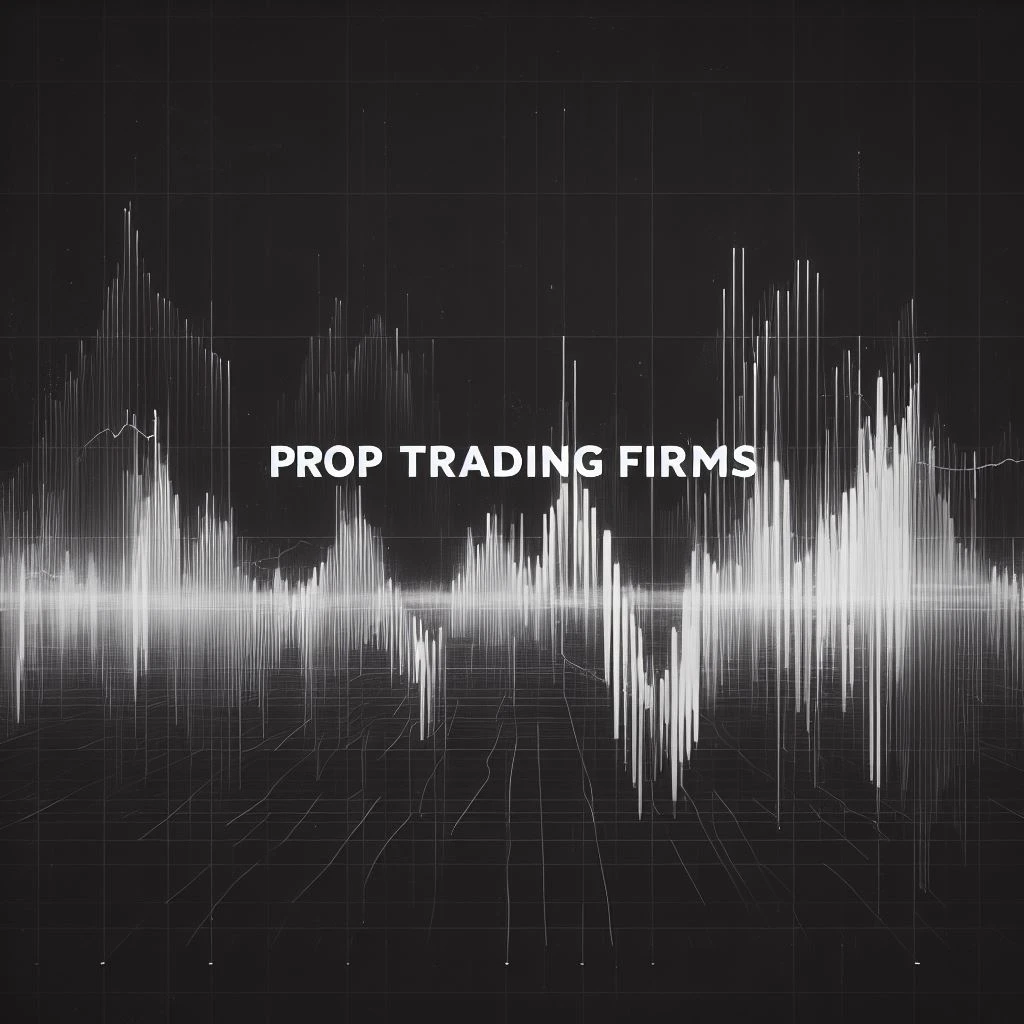Risk Management in Prop Trading
Welcome to this comprehensive guide on risk management in prop trading. If you’re a funded trader, you know that trading isn’t just about making profits; it’s also about minimizing losses. That’s where risk management comes into play. In this article, we’ll delve into actionable strategies to help you manage risk effectively while trading with a prop firm.
Remember, even the best traders can’t eliminate risk entirely, but they can manage it. And that’s what sets them apart.
What is Prop Trading?
H3: Definition and Basics
Proprietary trading is when financial firms use their own capital to trade stocks, bonds, and currencies instead of relying on client commissions. This allows them to potentially earn significant profits directly from the market.
How it Differs from Retail Trading
Retail trading involves individual traders using their own capital to make trades. Prop traders, on the other hand, are funded by the firm they join. This provides them access to more resources, such as advanced trading software and larger pools of capital. However, it also means that they must manage the firm’s money wisely since they are responsible for it.
Why Risk Management in Prop Trading is Important
Financial Implications
When you’re trading with a prop firm, you’re essentially handling someone else’s money. And let’s be honest, nobody likes losing money, especially when it’s not theirs to lose. Financial risks in prop trading can range from market volatility to sudden economic changes. If you’re not careful, these risks can result in significant financial losses for the firm. Another thing about prop trading, you’re often dealing with significant trading leverage, which can amplify both gains and losses. This makes it even more crucial to understand and implement effective risk management strategies.
In prop trading, the stakes are high. One wrong move can cost you your funded account, which is why risk management isn’t just a good practice—it’s a necessity.
Career Longevity
Think of risk management as your career’s safety net. The better you are at managing risks, the longer you’ll last in the trading world. Prop trading firms are more likely to keep traders who can consistently generate profits while minimizing losses. In other words, practicing good risk management in prop trading can be your ticket to a long, successful career in trading.
Legal and Compliance Aspects
Last but not least, let’s talk about the legal side of things. Regulatory considerations are a big deal in prop trading. Trading with a prop firm that works with a regulated broker is not just a smart move; it’s a safer one. Regulated brokers are less likely to engage in manipulative practices, giving you a more secure trading environment.
Types of Risks in Prop Trading
Market Risk
Market risk, also known as “systematic risk,” is the risk that the entire market will decline, affecting almost all assets. For example, if there’s a sudden economic downturn or a geopolitical event that shakes investor confidence, you could see a broad market decline. In prop trading, this could mean substantial losses if you’re not prepared.
An example is the 2008 financial crisis. The stock market lost over 50% of its value due to the collapse of the housing market, the failure of major financial institutions, and the loss of confidence in the financial system.
Another example is the COVID-19 pandemic. The stock market lost over 30% of its value due to economic uncertainty and the fear of a global recession.

In both of these cases, the stock market decline was caused by factors that affected all assets in the market, regardless of their individual characteristics. This is what makes market risk such a significant risk for investors.
To mitigate market risk, you can diversify your portfolios and use hedging strategies.
Liquidity Risk
Liquidity risk is the risk that you won’t be able to buy or sell assets quickly enough to prevent or minimize a loss. For instance, if you’re trading a stock that suddenly has no buyers, you’re stuck holding it until someone is willing to buy, which could result in a loss.
In 2007, the subprime mortgage crisis led to a sharp decline in the value of mortgage-backed securities (MBS). This caused a lot of banks and other financial institutions to become insolvent. As a result, there was a sudden decrease in the liquidity of the MBS market.
Many investors found themselves unable to sell their MBS holdings at a fair price. This was because there were few buyers in the market and those who were willing to buy were demanding a significant discount.
Operational Risk
Operational risk refers to the risks associated with the operational and administrative procedures within the firm. This could be anything from a software glitch that prevents you from executing trades to human errors like miscommunication within the team.
In 2012, Knight Capital, a major market maker, lost over $440 million due to a software glitch. The glitch caused Knight’s trading systems to place a large number of erroneous orders, which resulted in significant losses.
This example shows how a software glitch can lead to large losses for financial institutions. Operational risk is an important consideration for all financial institutions, as it can lead to financial losses, reputational damage, and regulatory scrutiny.
Psychological Risks
Last but not least, we have psychological risks. Trading is as much a mental game as it is a financial one. Emotional factors like fear, greed, or even overconfidence can cloud your judgment and lead to poor trading decisions.
Traders face numerous challenges in the financial market, including psychological risks. One such risk is the fear of losing money that can lead to poor trading decisions. For instance, traders may hold on to losing positions with the hope of a market turnaround. However, if the position continues to lose money, the trader may eventually exit at a significant loss. Similarly, overconfidence can lead to excessive risks and trades without considering the potential risks involved, particularly in volatile markets, resulting in substantial losses.
To mitigate these psychological risks, traders should be aware of the risks and take steps to minimize them. One way to do so is by developing and sticking to a trading plan that includes entry and exit criteria, as well as a risk management strategy. Additionally, maintaining a trading journal can help traders track their trades and identify behavioral patterns. By taking these steps, traders can reduce their exposure to psychological risks and improve their chances of success in the market.
Here are some other examples of psychological risks in the financial market:
- Greed
- Regret
- Anxiety
- Revenge trading
- Herd mentality
Psychological risks can be difficult to overcome, but they are essential to manage if you want to be a successful trader.
It is also important to remember that trading is a marathon, not a sprint. There will be ups and downs along the way. It is important to stay disciplined and focused on your long-term goals.
Prop Firm Risk Management Tools
Stop-Loss and Take-Profit Orders
Stop-loss and take-profit orders are your best friends for risk management in prop trading. A stop-loss order automatically sells an asset when it reaches a certain price, preventing further losses. On the flip side, a take-profit order sells the asset when it reaches a specific price, locking in your gains. To use these tools effectively, set your stop-loss at a price that represents an acceptable loss and your take-profit at a price that represents a satisfactory gain.
Position Sizing
Position sizing is all about determining how much of your portfolio should be invested in a single trade. A common strategy is to risk only a small percentage, say 1-2%, of your total trading capital on a single trade. This way, even if the trade goes south, the impact on your portfolio is minimal.
Risk-Reward Ratio
The risk-reward ratio is a simple yet powerful tool that helps you evaluate the potential risks and rewards of a trade. To calculate it, divide the potential loss by the potential gain. A ratio of 1:3 means you’re risking $1 to make $3, which is generally considered a favorable risk-reward ratio.
You can try out this simple risk-reward ratio calculator we created below.
Risk-Reward Ratio Calculator
Risk-Reward Ratio: –
Trading Software
In today’s digital age, there are numerous software tools designed to help traders manage risk. These range from platforms that automatically execute stop-loss and take-profit orders to more advanced systems that can analyze market conditions and adjust your trading strategy accordingly.
Advanced Risk Management Strategies
Hedging
Hedging is like buying insurance for your trades. The idea is to take an opposite position in a related asset to offset potential losses. For example, if you’re long on a stock, you could hedge by buying a put option. If the stock price drops, the put option will increase in value, offsetting some or all of your losses.
Diversification
You’ve probably heard the saying, “Don’t put all your eggs in one basket.” Diversification is the practice of spreading your investments across different asset classes or trading strategies. This can help mitigate the impact of any single losing trade on your overall portfolio.
Diversification is your portfolio’s best defense against market volatility.
Algorithmic Risk Management
In the age of technology, algorithmic risk management has become increasingly popular. These are computer programs designed to automatically manage risk based on predefined criteria. For example, an algorithm could automatically adjust your position sizes based on the volatility of the asset you’re trading.
Conclusion
We’ve covered a lot of ground in this article, from the basics of prop trading to advanced risk management strategies. Remember, risk is an inherent part of trading, but managing it effectively can be the difference between a short-lived career and long-term success. So, take these strategies to heart and start implementing them in your trading routine today.
















